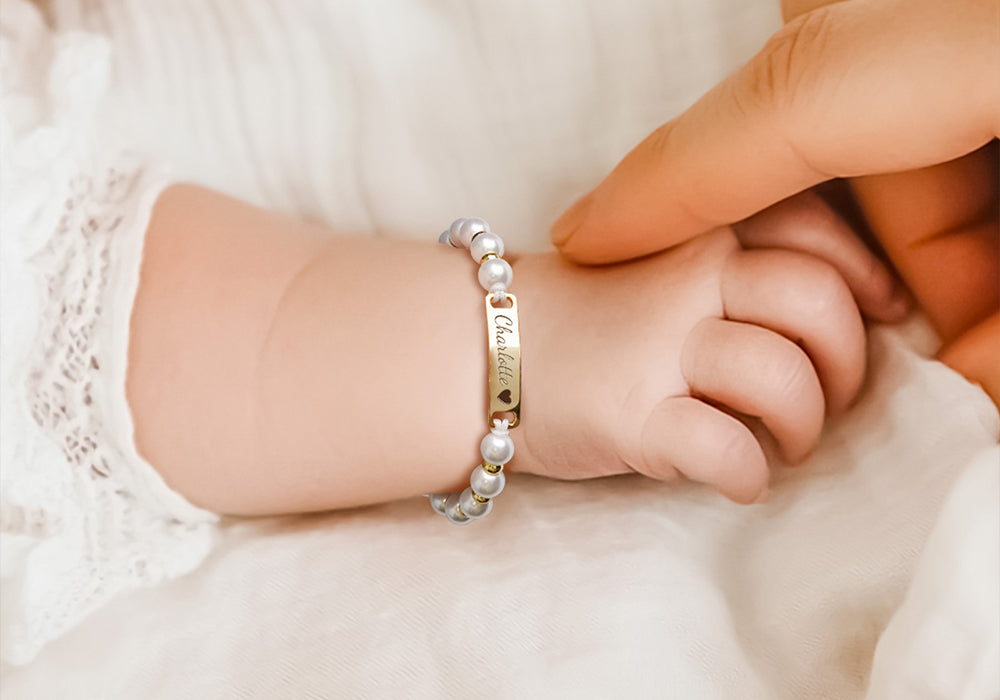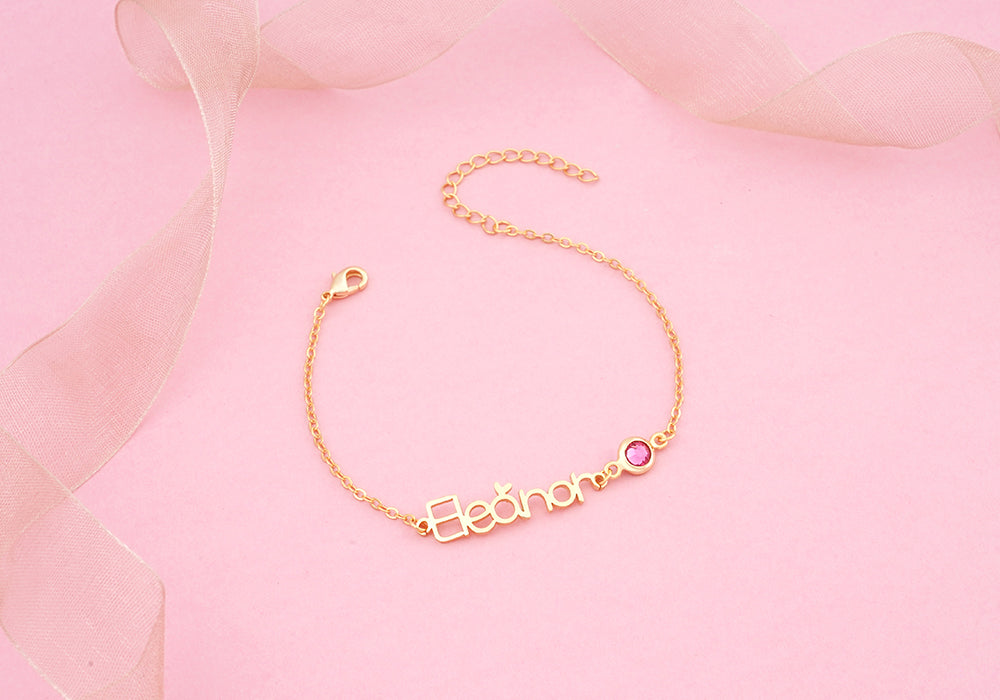Cultural Customs of Giving Children's Jewelry Around the World
Jewelry has long been a significant part of human culture, symbolizing various aspects of life, including wealth, status, and personal identity. Across different cultures, the tradition of gifting jewelry to children carries deep meaning, often rooted in protection, religious beliefs, and social customs.
The Historical Significance of Children's Jewelry
The practice of gifting jewelry to children dates back thousands of years, with roots in ancient civilizations. In many cultures, children's jewelry was more than just adornment; it served as a symbol of protection, warding off evil spirits and bringing good fortune. For example, in ancient Egypt, amulets and beads were commonly given to children to protect them from harm. Similarly, in various parts of Asia, jewelry made of specific materials like jade was believed to offer protective and healing properties.
Over time, these traditions have evolved, but the essence remains the same. Jewelry continues to be a meaningful gift for children, often marking significant milestones such as births, christenings, and birthdays. Whether it’s a simple bracelet, a gold pendant, or an intricately designed anklet, the act of giving jewelry to children is deeply rooted in cultural significance.
Children's Jewelry in Western Cultures
In Western cultures, the tradition of gifting children's jewelry is often associated with significant life events. In the United States, for instance, it is common to gift jewelry to mark milestones such as the birth of a child, baptisms, or christenings. These gifts often include items like bracelets, necklaces, and earrings, which may be passed down through generations as family heirlooms. The sentimental value attached to these pieces is immense, as they are seen as symbols of love and protection.
In the United Kingdom, similar practices exist, with jewelry being a popular gift for special occasions. Christenings, in particular, are events where children often receive their first pieces of jewelry, such as silver bangles or personalized lockets. Family heirlooms play a significant role here as well, with jewelry often being passed down from parents or grandparents as a symbol of continuity and family tradition.
Children's Jewelry in Asian Cultures
In many Asian cultures, jewelry is deeply embedded in cultural and religious practices, with children often receiving their first pieces of jewelry at a very young age.
In China, jade is considered a precious material with powerful protective properties, making it a popular choice for children's jewelry. Jade bracelets and necklaces are often given to infants and young children to safeguard their health and well-being. Additionally, silver jewelry is commonly gifted, particularly during significant events like the Chinese New Year. These pieces are believed to bring good luck and are often engraved with symbols and characters that carry auspicious meanings.
In Japan, the approach to children's jewelry is more minimalistic, reflecting the country’s cultural emphasis on simplicity and subtlety. Small pendants or amulets are often gifted to children, with each piece carrying a specific meaning or symbol of protection. For example, Omamori charms, which are believed to bring good luck and protection, are popular gifts for children, especially during special occasions like birthdays or the beginning of the school year.
Children's Jewelry in African Cultures
African cultures are known for their vibrant and diverse traditions, and jewelry plays a significant role in many of these customs, particularly when it comes to children.
In Nigeria, jewelry is often a symbol of wealth, status, and cultural identity. Children, especially those from well-to-do families, are frequently adorned with gold and silver jewelry as a display of prosperity. Beaded jewelry, in particular, holds great cultural significance, with different colors and patterns representing various tribal affiliations and social statuses. For example, in the Yoruba culture, newborns are often gifted with coral bead necklaces and bracelets, which are believed to bring protection and blessings from the ancestors.
Children's Jewelry in Latin American Cultures
Latin American cultures place a strong emphasis on family and religious traditions, and this is often reflected in the practice of gifting jewelry to children.
In Mexico, it is customary to gift gold jewelry to children during important life events, such as baptisms and birthdays. Gold is highly valued in Mexican culture, not just for its material worth but also for its symbolic significance. Religious jewelry, such as gold crosses or medallions depicting saints, is commonly given to newborns as a form of protection and blessing. These pieces are often cherished family heirlooms that are passed down through generations.
In Brazil, the tradition of gifting jewelry to children is deeply intertwined with both cultural and religious beliefs. Baptisms, in particular, are significant occasions where children receive gold or silver jewelry, often in the form of bracelets or necklaces. These gifts are seen as a way to bless the child and ensure their protection as they grow. Additionally, religious symbols such as the image of Our Lady of Aparecida, the patron saint of Brazil, are frequently incorporated into children's jewelry.
The Role of Religion in Children's Jewelry Traditions
Religion plays a significant role in the tradition of gifting jewelry to children across the world. In many cultures, religious beliefs and practices deeply influence the types of jewelry given and the occasions on which they are gifted.
In Christian traditions, jewelry is often given during sacraments such as baptism and First Communion. Crosses, medallions depicting saints, and religious symbols are common choices, serving as both a spiritual symbol and a protective talisman for the child. These pieces are often blessed by religious figures, further enhancing their spiritual significance.
Modern Trends in Children's Jewelry
In recent years, the tradition of gifting children's jewelry has evolved, reflecting broader changes in society and culture. While traditional practices remain strong, modern trends have introduced new styles and meanings to children's jewelry.
One significant trend is the shift towards personalized and meaningful jewelry. Parents and families now often choose to give children custom-made pieces that reflect their unique personalities or commemorate special events. Personalized name bracelets, birthstone rings, and engraved pendants have become popular choices, offering a modern take on the traditional practice of gifting jewelry.
Another trend is the growing awareness of ethical and sustainable practices in jewelry making. As consumers become more conscious of the environmental and social impact of their purchases, there is an increasing demand for jewelry made from ethically sourced materials. This shift has led to the rise of brands that specialize in eco-friendly and fair-trade jewelry for children, ensuring that these cherished gifts are both beautiful and responsible.
Globalization has also influenced the tradition of children's jewelry, leading to a blending of cultural practices. Families living in multicultural societies often incorporate elements from different traditions into their jewelry gifts, creating pieces that celebrate a diverse cultural heritage. This fusion of styles and symbols reflects the interconnectedness of the modern world and the way in which traditions evolve over time.
Conclusion
The tradition of gifting children's jewelry is a rich and varied practice that spans across cultures and continents. Whether as symbols of protection, religious devotion, or expressions of love, these cherished pieces carry deep meaning and significance. As we move forward in a globalized world, understanding and respecting these diverse customs is more important than ever. By appreciating the cultural contexts in which these traditions exist, we not only honor the past but also contribute to a more inclusive and respectful present.
FAQs
1. What is the significance of giving children's jewelry in different cultures?
- Children's jewelry often symbolizes protection, religious beliefs, and cultural heritage. The significance varies by culture, with some viewing it as a way to bless and protect the child, while others see it as a symbol of family continuity and tradition.
2. Why is gold commonly used in children's jewelry in many cultures?
- Gold is highly valued in many cultures for its durability, beauty, and symbolic meaning. It is often seen as a symbol of wealth, prosperity, and protection, making it a popular choice for children's jewelry.
3. How has modern society influenced the tradition of giving children's jewelry?
- Modern society has introduced trends like personalized and ethically sourced jewelry. Globalization has also led to the blending of cultural traditions, resulting in more diverse and inclusive practices in gifting children's jewelry.
4. Are there any religious restrictions on giving children's jewelry?
- Some religions have specific guidelines or customs related to jewelry. For example, Islamic cultures may prefer jewelry that includes verses from the Quran, while Christian traditions might focus on religious symbols like crosses. It’s important to consider these factors when giving jewelry in a religious context.
5. How can I choose the right jewelry for a child from a different culture?
- To choose the right jewelry, research the cultural significance of materials, symbols, and designs in the recipient's culture. Understanding these elements can help ensure that your gift is both meaningful and respectful.




